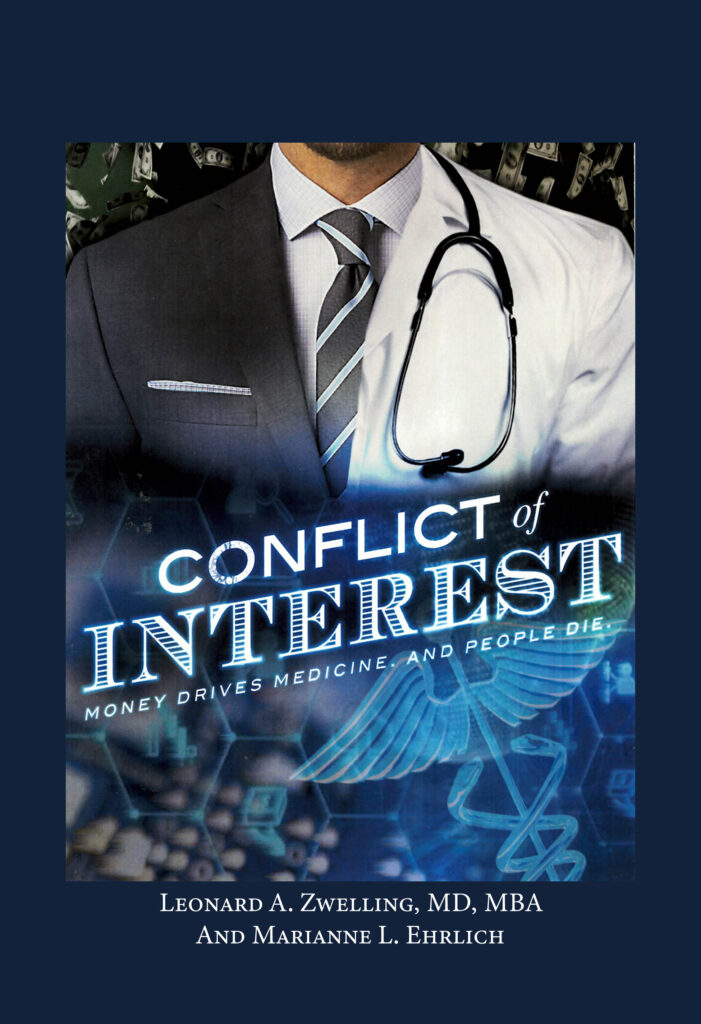The Faculty Convocation
By
Leonard Zwelling
At 4 PM on October 21, the annual MD Anderson Faculty Convocation took place under strict Covid rules so attendance was limited. However, it was all there to see on Zoom and it was well worth a look.
Starting with the achievement awards, you have to be impressed with the accomplishments of the faculty under the duress of Covid, institutional financial pressure, and leadership changes. I was particularly struck with Ann Killary’s acceptance speech that stressed the importance of education and training in the continued excellence of cancer research and clinical care. She also cemented the notion that all accomplishments require a team—at work and at home.
But, the biggest take away for me was the well worded speech by Faculty Senate Chair Dr. Isabella Glitza focusing on the increasing threat to continued excellence posed by faculty and employee burnout. She rightly noted that this is not a phenomenon limited to medicine, but it is, perhaps, most acute in medicine because the full burden of Covid was really borne by doctors, nurses and ancillary patient care personnel. And it is getting worse as the recent faculty workload survey demonstrated. The question is what to do about it.
First, what causes this affliction which Dr. Glitza noted is uniquely work related? It’s stress. Workloads are excessive. Pressure to see more and more patients in less and less time per patient has invaded all of medicine which is largely controlled by financial interests and patient care is still the place the hospitals and clinics make money. Like it or not, research is a loss leader that is an essential part of academic medicine because it is the future of progress not the current revenue stream. Patient care is mandatory in a hospital. Research is the bonus that serves to advance tomorrow’s patient care.
How can burnout’s effects on faculty and staff be minimized? I assure you it is not via yoga classes. Very simple–a very hard look at the burden of patient care on the faculty and staff must be initiated to assure that patient care is not being compromised through high through-put clinics and that ancillary support staff is available in all clinics. Down time for the physicians, nurses, and staff must be incorporated in the clinic schedule and yes, a Faculty Dining room is mandatory.
Finally, the number of unilateral decisions being made by the institutional leadership must be diminished and shared governance must become a reality. It was evident from Dr. Pisters’ speech at the convocation that he has some big plans for the institution including a new building. What about a careful look at the current building use given that so many are working from home? Perhaps that administration “boat” building can be retrofitted into labs and save the cost of a new South Campus lab structure. I just hope the Faculty Senate has been presented with the data that indicate the need for new lab space commensurate with new hiring.
The Convocation is always a great event and this was no exception. If you didn’t watch it, see if you can get a recording and pay close attention to Dr. Glitza’s address. She got it exactly right.
MD Anderson’s greatest assets are still its name and its faculty. The Convocation demonstrates why, but you can’t take your eye off the ball. Assuming number one status is most unwise. It must be earned every day. It’s clear that the faculty get that. Does the leadership? I’d say—not yet!





4 thoughts on “The Faculty Convocation”
The Convocation was good and the speeches were excellent. I am sorry that due to the Administration bungling 5he Faculty Senate it was so small in a tiny room. I would have attended in person, but I only had three days notice.
I miss the old days of the Faculty Awards Dinner(Prom) where the retirees would tell about their career at Anderson. That was special to me.
It was special to all of us. I am so grateful I got here soon enough to experience the Prom. LZ
The importance of a Faculty Dining Room to have a meal, to bond colleagues, and to discuss issues is SO important!
At the Mayo Clinic, we had the “University Club.” At Roper Hospital in Charleston, SC, we had a similar dining room funded by a generous gift of Dr Larry Lamel and the Medical Society of South Carolina. So much good occurs in these special places.
Burnout is treatable!
First, physician and staff must be given the best support to make their clinics and procedural areas easy to use and efficient IF larger patient volume is pushed.
Second, leadership needs to “round” in ALL these areas daily to ask what is needed to make the day successful, to thank staff, and to eliminate unnecessary “well-baby” visits to simply assure revenues. So many patients who are doing well can be managed electronically/by telemedicine without personal visits. That would open so many clinic slots for more urgent access and decrease wait times.
Finally, we are NOT examining the burnout issues clearly and explicitly. This is NOT “rocket science.” The issues are relatively easy to identify and can be solved IF we all move beyond EXCESSIVE revenues, salaries, and growth.
The needs of the patient are FIRST! Our financial wealth is beyond 90% of Americans and does NOT need to be so excessive.
Who is burning out healthcare: we are with our greed!
Amen, Jeb